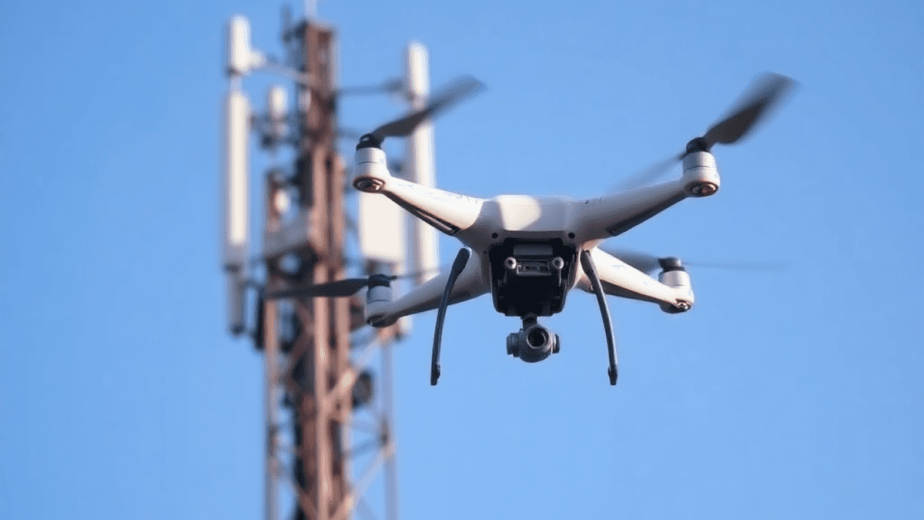Introduction
The world of infrastructure management has changed a lot because of new technologies. These key innovations are crucial in determining how infrastructure management will evolve, with an emphasis on improving efficiency and sustainability.
Some of the main technologies driving this change are:
- Internet of Things (IoT): Allowing for immediate data gathering and observation.
- Artificial Intelligence (AI): Enabling complex analysis and decision-making.
- Sustainable practices: Encouraging environmentally friendly solutions that lessen carbon footprints.
These improvements are vital for creating strong infrastructure systems that can tackle today’s problems.
1. The Rise of Smart Cities
Smart cities are an innovative way to improve urban areas by using technology and data to make life better for residents. These cities use various technological solutions to manage resources and services effectively, ensuring sustainable development and improving urban living conditions. The importance of smart cities is in their ability to tackle issues like traffic jams, energy consumption, public safety, and environmental sustainability.
Leading Examples of Smart Cities
Several cities are leading the way in implementing smart solutions:
-
Dallas: This city has adopted smart traffic management systems that utilize real-time data to optimize traffic flow and reduce congestion. IoT sensors monitor vehicle movement, allowing for adaptive signal controls.
-
Chicago: Employing a network of sensors across the city, Chicago monitors everything from air quality to parking availability. The use of data analytics ensures efficient resource allocation and timely responses to urban issues.
-
San Francisco: Known for its progressive technology integration, San Francisco utilizes smart waste bins equipped with sensors that notify waste management services when they require collection, significantly reducing operational costs.
Role of IoT Sensors and Data Analytics
At the heart of these developments are IoT sensors and data analytics, which are crucial in turning cities into smarter places. Here’s how they contribute:
-
Real-Time Monitoring: IoT devices collect vast amounts of data regarding energy consumption, air quality, and traffic patterns.
-
Data-Driven Decision Making: Advanced analytics enable city planners to interpret this data effectively, leading to informed decisions that enhance service delivery.
-
Increased Efficiency: Smart technologies streamline operations in public services, reducing waste and improving overall efficiency across urban infrastructure.
As cities continue to evolve through technological integration, the rise of smart cities highlights the potential for reimagining urban infrastructure management in ways that significantly benefit communities.
2. Understanding the Infrastructure Management Lifecycle
The infrastructure management lifecycle consists of several important stages, each crucial for the success of infrastructure projects. These stages are:
- Planning
- Implementation
- Support
- Disposal
Planning Phase
The planning phase is fundamental for any infrastructure project and involves creating a strategic plan. This plan outlines objectives, resource allocation, timelines, and key performance indicators (KPIs). A well-defined plan serves as a guide for all future activities. Key elements to consider during this phase include:
- Assessment of current infrastructure conditions
- Stakeholder engagement to identify needs and expectations
- Regulatory compliance considerations
A strong planning process reduces risks associated with project execution and aligns all stakeholders towards shared goals.
Implementation Phase
Implementation comes after planning and involves putting into action the strategies outlined in the plan. This phase requires careful coordination among various teams and resources. Three main aspects to address during implementation are:
-
Risk Validation: Identifying potential risks early in the process is crucial. This includes technical challenges, budget overruns, or scheduling conflicts.
-
Mitigation Strategies: Developing backup plans enables organizations to address issues proactively rather than reactively. For example, using advanced data analysis can provide real-time insights into project health, allowing for timely interventions.
-
Quality Control: Ensuring adherence to standards and specifications during implementation safeguards against future complications. This is where computer system validation plays a vital role, ensuring that all systems are thoroughly tested and meet required standards before full-scale implementation.
Support Phase
After implementation, ongoing support is essential for maintaining operational efficiency. This includes regular monitoring, updates, and improvements based on performance feedback.
Disposal Phase
Finally, the disposal phase focuses on the responsible decommissioning of infrastructure assets when they reach the end of their lifecycle. Sustainable disposal strategies reduce environmental impact and ensure compliance with regulations.
Using a lifecycle approach ensures that infrastructure management practices remain effective and adaptable in an ever-changing environment. Each stage plays a crucial role in achieving long-term success while effectively addressing new challenges.
3. Leveraging Emerging Technologies for Enhanced Performance and Security
The integration of AI and machine learning is transforming decision-making processes within infrastructure management systems. These technologies enable organizations to analyze vast amounts of data, identify patterns, and derive actionable insights. For instance, predictive analytics powered by machine learning can foresee maintenance needs in energy grids or construction projects, significantly reducing costs associated with unexpected failures.
Role of Edge Computing
As IoT devices proliferate in smart cities, the volume of data generated skyrockets. Edge computing addresses this challenge by processing data closer to the source, minimizing latency and bandwidth issues. By deploying edge computing solutions, cities can enhance real-time decision-making capabilities. For example, traffic management systems can analyze vehicle flow data on-site to optimize light changes or reroute traffic instantaneously based on current conditions.
Cloud-Native Development Practices
The complexity of managing modern infrastructure projects necessitates agile approaches. Cloud-native development practices provide organizations with the flexibility needed for scalability and operational efficiency. By building applications specifically designed for the cloud environment, companies can streamline deployment processes and ensure that systems adapt to changing demands seamlessly.
Benefits of cloud-native practices include:
- Enhanced collaboration across teams
- Rapid iteration and deployment cycles
- Improved security through built-in protocols
Adopting these emerging technologies not only enhances performance but also fortifies security measures within infrastructure management frameworks. Integrating AI-driven analytics with edge computing and cloud-native strategies positions organizations at the forefront of innovation, enabling them to meet the demands of a rapidly evolving landscape in infrastructure management.
4. Driving Sustainability Initiatives Through Innovative Solutions
The emphasis on sustainability within infrastructure projects has gained significant traction, driven by both regulatory pressures and community demands. Sustainable practices offer long-term benefits that extend beyond compliance, fostering resilience and enhancing public trust in organizations.
Key aspects include:
- Integration of Renewable Energy: Infrastructure projects increasingly incorporate renewable energy solutions. For instance, the implementation of solar mini-grids in Denver exemplifies how cities can leverage solar power to reduce reliance on fossil fuels. These systems not only provide clean energy but also enhance energy resilience during outages.
- Carbon Footprint Reduction: By adopting innovative frameworks that blend traditional infrastructure with sustainable technologies, organizations can effectively lower carbon emissions. Such initiatives demonstrate a commitment to environmental stewardship while optimizing operational efficiency.
- Community Engagement: Sustainable practices often involve local communities in decision-making processes, ensuring that infrastructure developments align with their needs and values. This fosters a sense of ownership and responsibility towards the projects.
As urban areas evolve, the integration of sustainability into infrastructure management becomes imperative for building a future that prioritizes ecological balance alongside technological advancements.
5. Embracing Multi-Cloud Strategies for Resilient Infrastructure Management
Adopting a multi-cloud strategy presents organizations with significant advantages, particularly in enhancing resilience and flexibility in operations. This approach allows companies to leverage the strengths of multiple cloud providers, ensuring that they are not overly reliant on a single vendor. Benefits include:
- Increased Redundancy: Utilizing various cloud platforms minimizes the risk of downtime due to provider-specific issues.
- Scalability: Organizations can easily scale resources according to demand across different environments, accommodating fluctuating workloads.
A well-executed multi-cloud strategy also leads to cost optimization through strategic workload distribution. By analyzing performance metrics and cost structures from various providers, businesses can:
- Allocate Resources Effectively: Deploy workloads where they are most cost-effective while maintaining high performance.
- Avoid Vendor Lock-in: This flexibility allows for negotiations with cloud providers, leading to potentially better pricing and service agreements.
In addition, multi-cloud strategies support compliance with data sovereignty regulations by enabling organizations to store data in specific geographical locations. As infrastructure management evolves, embracing this approach becomes crucial for achieving sustainable growth and operational excellence.
6. The Role of Digital Transformation in Shaping Future Infrastructure Management Practices
Digital transformation is reshaping industries across the globe, and infrastructure management is no exception. Key trends influencing this evolution include:
- Integration of Advanced Technologies: IoT, AI, and Edge Computing are becoming integral to infrastructure management systems. These technologies enable real-time data collection and analysis, enhancing decision-making processes.
- Agility and Scalability: Organizations must adapt their IT infrastructures to accommodate fast-evolving technologies. Agility allows for quick responses to changing demands, while scalability ensures that systems can grow alongside increasing data volumes and user requirements.
- Data-Driven Decision Making: With digital transformation, organizations leverage data analytics to optimize operations. This shift from intuition-based decisions to data-driven strategies enables more accurate forecasting and efficient resource allocation.
The need for a flexible framework becomes paramount as businesses transition to new operating models. Embracing these digital advancements equips companies with the tools necessary for future growth, allowing them to remain competitive in an ever-changing landscape. Adapting to digital transformation not only streamlines processes but also fosters innovation within infrastructure management practices.
Conclusion
The world of infrastructure management is changing quickly. It’s important to embrace new technologies like IoT, AI, and sustainable practices to improve efficiency and resilience.
Here are the main points to remember:
- Adoption of Smart Technologies: Leveraging smart city solutions fosters improved urban living.
- Lifecycle Management: Understanding the infrastructure management lifecycle promotes effective planning and implementation.
- Cloud and Digital Strategies: Multi-cloud approaches enhance flexibility, while digital transformation drives agility.
As a trusted partner, Mira Spatial provides innovative solutions that align seamlessly with these future trends in infrastructure management. Their expertise can support your journey into the future of infrastructure management. If you’re interested in learning more about their services or how they can assist you, feel free to contact them.



